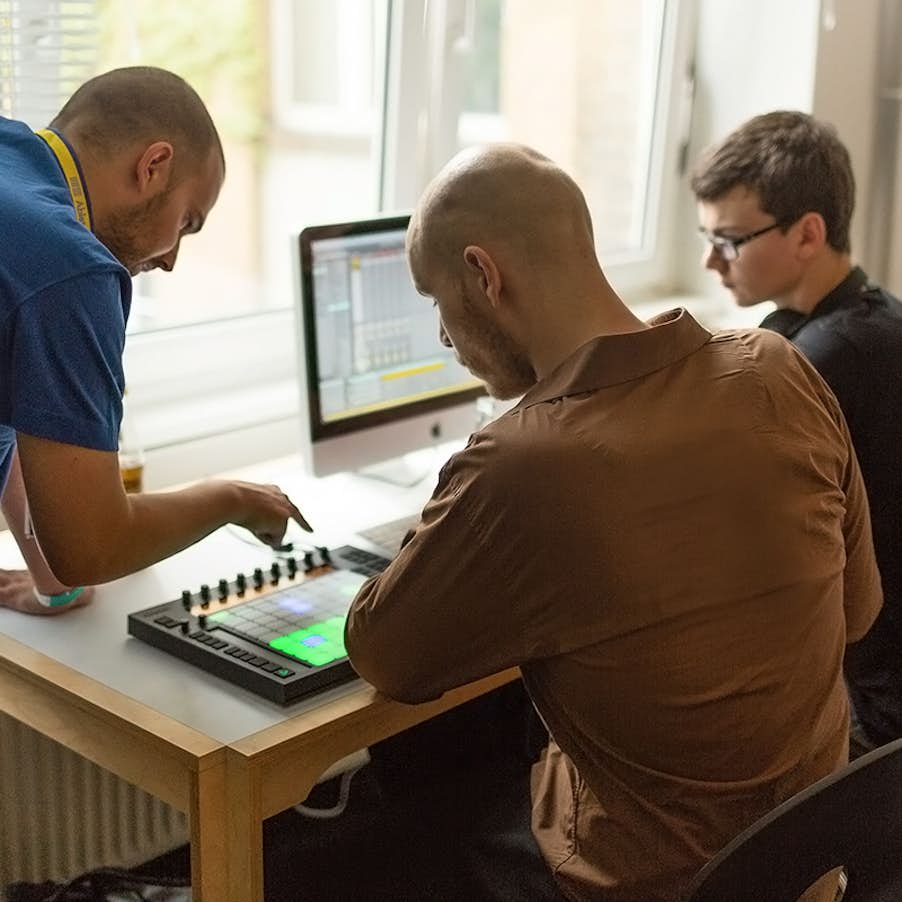Ableton Live is a powerful digital audio workstation (DAW) that has become a go-to tool for musicians, producers, and DJs around the world. Whether you’re a beginner or a seasoned professional, Ableton Live offers a wealth of features and tools that can take your music production to the next level. In this article, we will provide an overview of Ableton Live and discuss its key features.
The Interface
Ableton Live has a user-friendly and intuitive interface that allows users to easily navigate and access its various features. The main screen is divided into two views: Session View and Arrangement View.
The Session View is designed for live performances and improvisation. It uses a grid-based layout where you can trigger and arrange different clips of audio, MIDI, and effects. This allows for real-time manipulation and experimentation with your music.
The Arrangement View is more traditional and resembles a timeline. It is used for arranging and composing your tracks. Here, you can edit and sequence your clips, add automation, and fine-tune your music.
Clip-based Workflow
Ableton Live’s clip-based workflow is one of its standout features. Instead of working with traditional timelines and tracks, Live encourages users to work with clips. Clips are small pieces of audio or MIDI that can be triggered, looped, and manipulated.
Working with clips allows for a more flexible and creative approach to music production. You can easily experiment with different variations of a musical idea, trigger effects in real-time, and seamlessly arrange and rearrange your clips on the fly.
Furthermore, Live’s unique warping feature enables you to easily match the timing and tempo of different clips, making it a valuable tool for remixing and live performances.
Instruments and Effects
Ableton Live comes bundled with a wide range of virtual instruments and effects that cover a variety of musical styles and genres. From synthesizers and samplers to drum machines and guitar emulators, Live offers a vast collection of high-quality sounds and tools to enhance your music production.
Additionally, Live supports third-party VST and AU plugins, allowing you to expand your sonic possibilities even further. This means you can integrate your favorite plugins seamlessly into your Ableton Live workflow.
Max for Live Integration
Ableton Live also integrates with Max for Live, which is a visual programming environment that expands the functionality of Live. Max for Live allows users to create custom devices, effects, and instruments using a graphical interface.
Max for Live offers endless possibilities for sound design and experimentation. You can build your own unique instruments, create complex effects chains, and develop innovative performance setups.

Credit: www.ableton.com
Workflow and Performance Enhancements
Ableton Live continually strives to improve its workflow, optimizing the user experience and enhancing performance. The latest versions of Live have introduced several features to streamline music production:
- Group Tracks: Easily manage and organize multiple tracks by grouping them together.
- Browser Collections: Create custom collections of your favorite sounds and devices for quick access.
- Multiple MIDI Clip Editing: Edit multiple MIDI clips simultaneously, making it easier to work on complex compositions.
- Automation Envelopes: Add and edit automation more easily with improved visualization and control.
- Push Integration: Ableton Push is a hardware controller specifically designed for Live, providing hands-on control of your music production.

Credit: www.youtube.com
Frequently Asked Questions For Introduction To Ableton Live : Master Music Production
What Is Ableton Live Used For?
Ableton Live is a popular digital audio workstation used for music production, live performance, and DJing.
How To Use Midi In Ableton Live?
To use MIDI in Ableton Live, simply connect your MIDI controller, select the track, and start playing or recording your MIDI data.
What Are The Different Versions Of Ableton Live?
Ableton Live comes in three main versions: Intro, Standard, and Suite, each offering different features and capabilities.
Where To Find Ableton Live Tutorials?
You can find Ableton Live tutorials on various online platforms such as YouTube, music production websites, and official Ableton Live website.
Conclusion
Ableton Live is a versatile and powerful DAW that offers a unique and intuitive approach to music production. Its clip-based workflow, seamless integration of instruments and effects, and continuous updates and enhancements make it a popular choice for both beginners and professionals.
Whether you’re creating electronic music, recording live instruments, or performing live on stage, Ableton Live provides the tools and flexibility you need to bring your musical ideas to life.